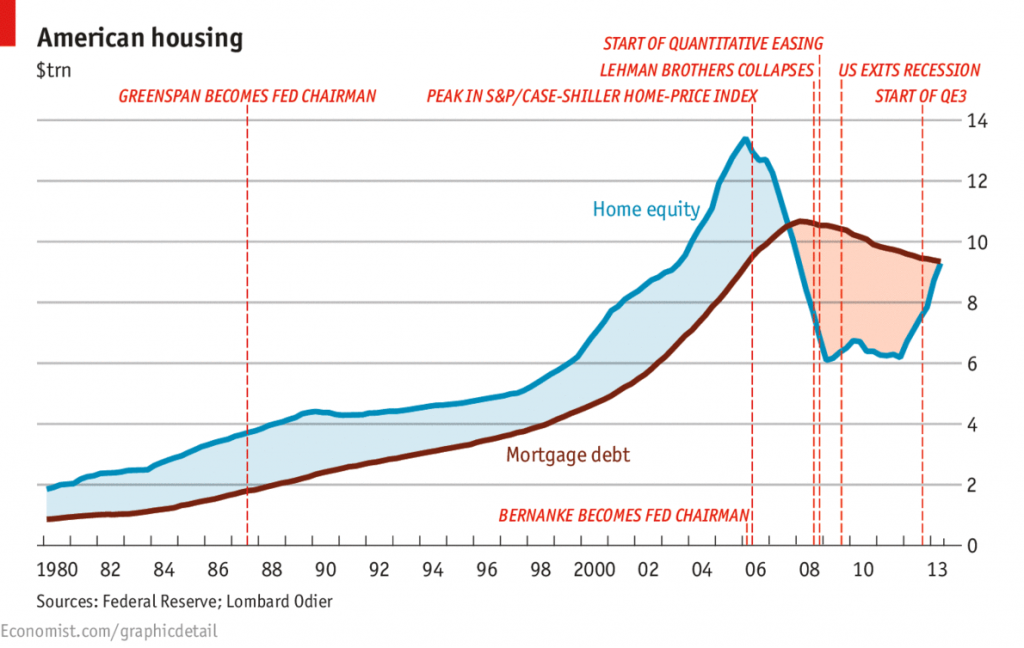The Economist magazine has announced it’s time for a house party — American households are returning to positive equity. Housing equity nationwide has increased dramatically over the past several months. Prices have continued to climb and mortgage debt keeps falling as households deleverage.
As The Economist points out, the crossover from negative to positive equity is an important psychological factor in a recovering consumer economy. Once homeowners register they are out of the red and into the black as far as their mortgage is concerned, the “wealth effect” begins to set in. As individuals feel wealthier they spend more, contributing to a virtuous economic cycle.
We can be fairly certain households will continue to deleverage for the foreseeable future since they have little choice in this tight credit environment. However, the instant equity boost coming from spiking asset prices will not last forever.
As you can see from the Economist’s chart below, we are just now entering a period of aggregate positive equity. In other words, the balance is tenuous at best.
Nobody likes a killjoy, but some clear-eyed pragmatism is definitely in order here. The current positive equity situation is in appearance only. Prices have spiked due to volatility introduced into the marketplace by real estate speculators and institutional investors with huge cash reserves. Bidding wars and the illusion of limited supply have led to a mini-bubble in California and nationwide that, by all sober accounts, is on the cusp of bursting.
The Economist cites the specter of the Federal Reserve’s taper as the event that may trigger the backslide into negative equity. Add increasing supply and falling demand, then presto: you’ve got a recipe for the harsh reality that mortgage debt remains grossly divergent from actual real estate values.
Chart courtesy of The Economist
















Jeff, in your conclusions regarding speculation contributing to rising prices are you ignoring the fact that new construction in Southern California is at a twenty year low? Notoriously slow planning departments, a lack of finished lots and cautious capital are all contributing to the problem. Perhaps part of the rise in prices is resulting from a lack of product under the classic supply and demand theory.